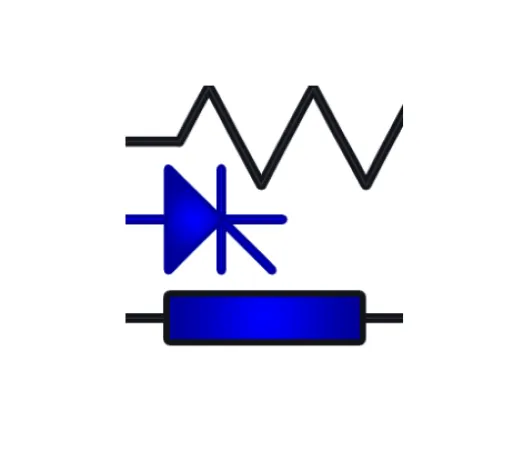15 Results for the search "Lightning":
Content of the webinar studies from A to Z on lightning strokes
Description:
Designs built or presented during the webinar of the series Studies from A to Z on Lightning stroke analysis.
Models built:
- Metal Oxide surge arrester (IEEE working group 3.4.11)
- To... see morewer model for fast-front transients.
- Footing resistance of towers (with ionization effect)
- air-gap leader (Area Criterion Model and equal area integration (Cigre))
- FD lines
- Substation equipment
- Parametric studies
- Corona
Tag(s): Lightning, stroke, fast-front transient, tower, arrester, cigre, line, substation, parametric, corona, air-gap, leader
Indirect Lightning Performance of a Real Distribution Network with focus on Transformer Protection
Description:
The paper applies the Monte Carlo procedure proposed by the Authors to evaluate the indirect lightning performance of a real medium-voltage distribution network, which includes feeders and laterals, p... see moreoles, secondary substations and surge protection devices. Such a procedure allows inferring the amplitude of lightning-induced voltages at any point and any phase of the network. The analysis presented in this paper aims at assessing the expected mean time between failures of each MV/LV transformer caused by indirect lightning strikes.
A heuristic technique has been specifically developed to reduce the computational effort despite the non-linear response of the network enhanced by the presence of surge arresters.
Authors: Alberto Borghetti, Fabio Napolitano, Carlo Alberto Nucci, Fabio Tossani, Gilnei J. G. Dos Santos, Donorvan R. Fagundes, Gustavo P. Lopes, Manuel L. B. Martinez
2014 International Conference on Lightning Protection (ICLP), Shanghai, China
Tag(s): induced voltages; distribution networks; Monte Car lo method; lightning protection; MTBF.
Selection of MV/LV Transformers to be Protected by Surge Arresters against Indirect Lightning Overvoltages
Description:
The papers addresses the problem of locating surge protective devices in a medium voltage distribution network by means of an accurate computer model for the calculation of lightning induced overvolta... see moreges and a Monte Carlo statistical procedure. The indirect lightning performance of small network cells of different configuration are evaluated and used as a benchmark for the validation of the surge arrester locations provided by a genetic algorithm procedure. The obtained results appear useful for the lightning protection design of networks
with complex topology.
Authors: Alberto Borghetti, Fabio Napolitano, Carlo Alberto Nucci, Fabio Tossani, Gilnei J. G. Dos Santos, Donorvan R. Fagundes, Gustavo P. Lopes, Manuel L. B. Martinez
2014 International Conference on Lightning Protection (ICLP), Shanghai, China
Tag(s): distribution network; surge arresters; lightning protection.
Indirect-Lightning Performance of Overhead Distribution Networks With Complex Topology
Description:
The paper deals with the evaluation of the indirect-lightning performance of overhead distribution networks. The novelty of this contribution is that it takes into account the inherent complexity of d... see moreistribution networks. These networks are indeed characterized by a plurality of lines (main feeder and laterals) and also by the presence of typical power components (e.g., transformers and surge arresters); they consequently differ considerably from the straight line configuration generally adopted in this type of studies.
To accomplish such an evaluation we have extended the general procedure already presented in a previous paper based on the use of the LIOV code along with the Monte Carlo method. The extended procedure combines the advantage of the LIOV-EMTP computer code—that allows the calculation of lightning-induced voltages in complex distribution networks—with a heuristic technique specifically developed and integrated in the Monte Carlo routine in order to reduce the computational effort. The application of the proposed procedure to a set of distribution overhead networks characterized by different topologies, but all of the same length, shows that, in general, the usual single straight-line approach may result into a misestimation of the indirect-lightning performance. The paper also analyzes and discusses the influence of both the line terminations, and the position of the line poles.
Authors: Alberto Borghetti, Senior Member, IEEE, Carlo Alberto Nucci, Fellow, IEEE, and Mario Paolone, Member, IEEE
IEEE TRANSACTIONS ON POWER DELIVERY, VOL. 24, NO. 4, OCTOBER 2009
Tag(s): LIOV-EMTP, lightning-induced overvoltages, lightning performance, power quality, distribution systems, overhead power lines.
On the Mitigation Effect of Surge Arresters on the Lightning Performance of Overhead Distribution Lines
Description:
For the accurate statistical assessment of the lightning performance of distribution lines one needs to
take into account the presence of protection devices such as surge arresters and shielding ... see morewire/neutral
groundings. Indeed, the presence of those devices can significantly modify the indirect lightning
response of the overhead line and, therefore, the relevant lightning performance.
In particular, this paper aims at investigating the impact of the presence of surge arresters on the
indirect lightning performance of overhead distribution lines having realistic configuration.
Specifically, reference is made to typical Italian distribution lines. The investigation is performed with
the help of a statistical procedure developed by the authors – based on the Monte Carlo method and of
the use of an accurate modelling/calculation tool for the induced surges – that has been recently
compared with one proposed in the IEEE 1410 Std for the same purpose, and shown to be more
complete and suitable for the problem of interest. The paper also aims at investigating the influence of
the presence of surge arresters on the indirect lightning surges transferred through power transformers.
Such an additional investigation is performed by means of a suitable high-frequency power
transformer mode integrated with the lightning-induced computation tool.
Authors: A. Borghetti, F. Napolitano, C.A. Nucci and M. Paolone - University of Bologna, Italy
CIGRE – Colloquium Cavtat - Application of Line Surge Arresters in Power Distribution and Transmission Systems
Tag(s): Lightning statistics, induced overvoltages, lightning performance of distribution lines, surge arresters, shielding wires groundings, Monte Carlo method.
